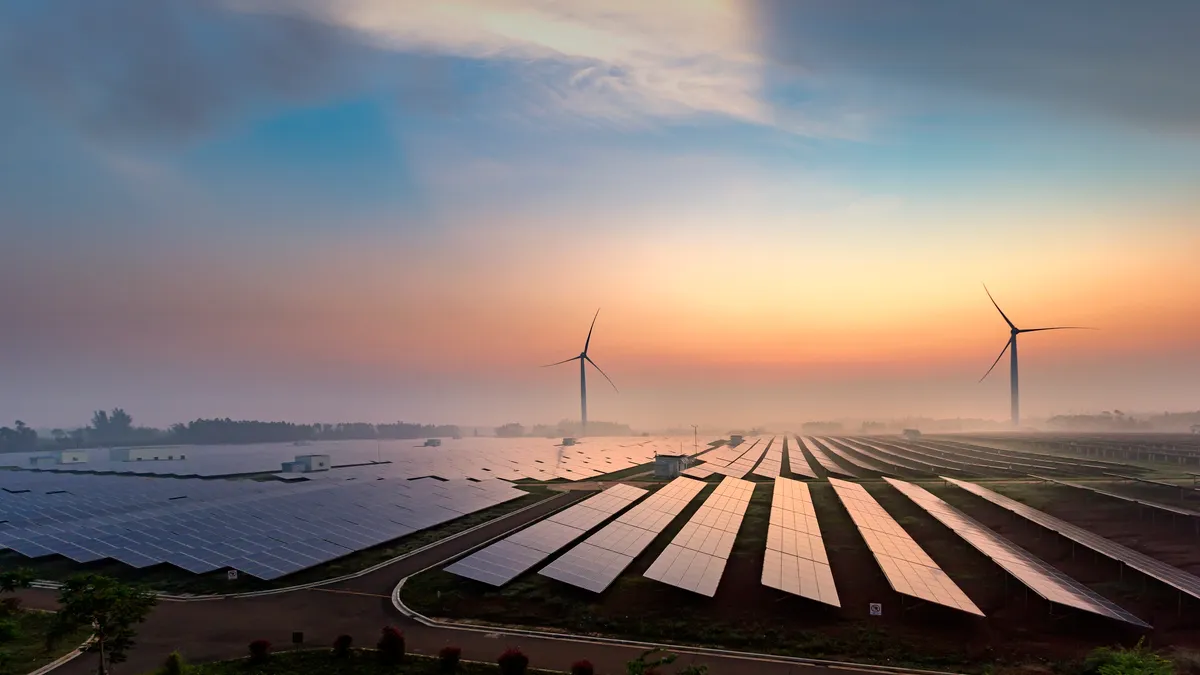Dive Brief:
- The tax credits in the Inflation Reduction Act have led Norwegian battery manufacturer Freyr to accelerate its manufacturing plans in the U.S. and partly informed the company’s decision to redomicile its holding company here, said Jason Peace, Freyr’s senior vice president of business development, during a Monday webinar.
- The U.S. is already “the biggest market for storage on a utility scale,” Peace said, but the lucrative tax incentives provided by the IRA contribute certainty to the industry that will lead to more investment from capital markets.
- The webinar, hosted by E2, looked at investments generated since the IRA was signed into law Aug. 16 last year. Scott Moskowitz, Hanwha Qcells’ head of market strategy and public affairs, said, “A year in, we're seeing the kinds of investment we’d all hoped for,” but warned against complacency.
Dive Insight:
E2, or Environmental Entrepreneurs, released a report Monday in conjunction with the webinar that found 210 major new clean energy projects had been announced since the passage of the IRA. If completed, E2 estimates those projects would create more than 74,000 new jobs and drive $86.3 billion in private investment to 39 states.
A recent report from the American Clean Power Association, which looked at the second quarter this year, found a 13% increase in number of clean energy projects under construction or advanced development compared to the same quarter last year.
“Though it is still too early to observe the effects of last year’s unprecedented federal incentives on clean power installations, their preliminary influence can be observed partially via the new-build pipeline which encompasses 145,592 MW of clean power potential, representing both projects currently under construction and those in advanced development stages,” ACP said.
Peace said that under the IRA, Freyr will receive “north of a billion dollars a year” in tax credits.
“So it's very, very lucrative for us,” he said. “That certainty also opens up the investment market. When you juice the economics with these types of tax incentives, with some certainty on the time horizon for those, it certainly helps with getting investment from the capital markets.”
Ariel Fan, CEO and founder of electric vehicle charging company GreenWealth Energy, said the “large institutional confidence for investors” generated by the IRA has allowed her small company to access new sources of financing.
That certainty “helps small companies get the capital they need to start up” and “affects the ecosystem in which they do business,” Fan said, including increased domestic supply thanks to manufacturing and production tax credits.
Large solar manufacturers like Qcells and First Solar have taken the opportunity to build out a domestic solar supply chain, investing billions in building manufacturing facilities in America — investments backed by the certainty the IRA provided, Moskowitz said.
The U.S. solar industry has sought to break its reliance on Chinese-made solar modules after the supply chain was strained by the pandemic and a U.S. Department of Commerce investigation into solar panel imports.
Peace said that the IRA has had a similar impact on the storage industry. Freyr announced last year that it will invest $1.7 billion in building battery manufacturing facilities in Georgia where Qcells is spending $2.5 billion to expand its existing facilities.
When it comes to manufacturing, “China had a 10- to 15-year head start on us,” Peace said. “So we're definitely excited about the IRA, not only for its impacts to us personally, but also to the supply chain.”
Many of the materials that Freyr relies on for battery production “are almost entirely produced in China today,” he said. “We're happy to see the announced investments in various areas of the U.S. to support the raw materials needs that we have, to mitigate the risks that we would face if not for that.”
Looking ahead
Moskowitz said that a new investment into a polysilicon manufacturer in Washington will enable Qcells to be “fully into” the U.S. supply chain, marking a “huge shift in where the market was from just a couple of years ago.”
“We've long had polysilicon in the United States, but to date, we've had zero manufacturing of solar cells and wafers,” he said. “And that’s created some really critical supply chain bottlenecks that we've needed to solve. And we're now seeing the type of investment our industry has so badly needed for a very long time.”
But Moskowitz also warned against complacency, saying that the IRA had in many ways sought to account for deficiencies in 2009’s American Recovery and Reinvestment Act, and “we need to keep learning from the past.”
“It’s still a challenging time,” he said, citing high interest rates that are dampening clean energy demand, global oversupply for some solar manufacturing pieces, and supply chain bottlenecks for others.
“But it's been a remarkable 12 months in which we have seen unprecedented investment, so it should be a really great decade ahead,” Moskowitz said.















